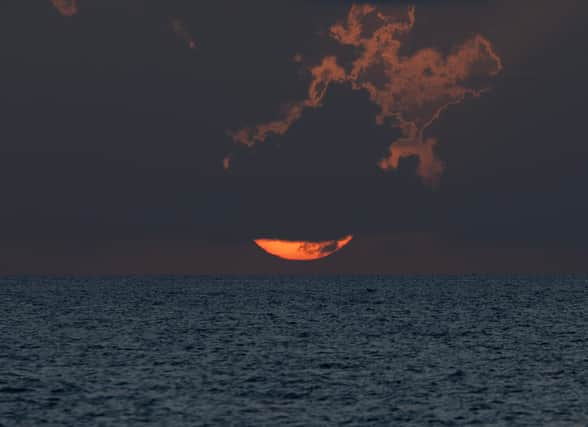Atlantic: missing section of water finally discovered by oceanographers


A massive blob of undetected water mass was previously discovered in the middle of the Atlantic Ocean that stretches across the Atlantic from the tip of Brazil to the Gulf of Guinea, near West Africa.
Named the Atlantic Equatorial Water, it forms along Earth's equator as ocean currents mix separate bodies of water to the north and south. But previous to its discovery, scientists had spotted waters mixing along the equator in the Pacific and Indian oceans, but never in the Atlantic, and published their research in the journal Geophysical Research Letters.
Advertisement
Hide AdAdvertisement
Hide AdViktor Zhurbas, a physicist and oceanologist at The Shirshov Institute of Oceanology in Moscow, told Live Science in an email: "It seemed controversial that the equatorial water mass is present in the Pacific and Indian oceans but missing in the Atlantic Ocean because the equatorial circulation and mixing in all three oceans have common features," "The identified new water mass has allowed us to complete (or at least more accurately describe) the phenomenological pattern of basic water masses of the World Ocean."
Ocean water is a mixture of interconnected masses and layers, which are mixed together and split apart again by currents eddies, and changes to temperature and salinity.
To distinguish water masses, oceanographers chart the relationship between temperature and salinity across the ocean, which are two measurements combining to determine the density of seawater.
Although equatorial waters in the Pacific and Indian oceans was discovered, no such relationship was spotted in the Atlantic. So to look for the missing water mass, scientists looked through data from the Argo programe, and found a temperature-salinity curve parallel to the curves of the North Atlantic and South Atlantic Central waters.
Advertisement
Hide AdAdvertisement
Hide Ad"It was easy to confuse the Atlantic Equatorial Water with the South Atlantic Central Water, and in order to distinguish them it was necessary to have a fairly dense network of vertical temperature and salinity profiles covering the entire Atlantic Ocean," Zhurbas said.
Now that the water mass has been identified, it will give scientists a better understanding of the ocean's mixing processes, which are vital to the oceans' transport of heat, oxygen and nutrients around the globe, Zhurbas said.
Comment Guidelines
National World encourages reader discussion on our stories. User feedback, insights and back-and-forth exchanges add a rich layer of context to reporting. Please review our Community Guidelines before commenting.
